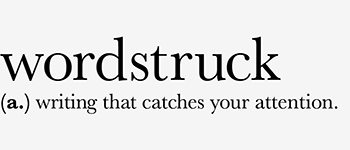 I recently took part in a pop-up choir with the fabulous Beccy Owen. A group of around 50 of us got together upstairs in the Cumberland Arms, learned some festive songs and sang them together outside, all in one afternoon. It was brilliant – I thoroughly recommend it.
I recently took part in a pop-up choir with the fabulous Beccy Owen. A group of around 50 of us got together upstairs in the Cumberland Arms, learned some festive songs and sang them together outside, all in one afternoon. It was brilliant – I thoroughly recommend it.
As part of the workshop, Beccy, in her wonderful, warm, welcoming and light-hearted manner introduced us to the three different parts of our voice that we use when we sing.
Head, chest and sob
There’s the ‘head voice’. That’s the high one. The one that feels like it’s coming from the space inside your skull somewhere. You can use it to hit the top notes, but it probably feels a bit uncomfortable if you have to use it for a while.
Then there’s the ‘chest voice’. This comes down the scale a bit and feels more like a comfortable place to sing from. It’s pitched like your natural speaking voice.
Finally there’s ‘sob’. Make a ‘huh’ sound, like you’re trying to expel all the air from your body quickly. You feel that low down in your belly, right? That’s the sob. It’s part of your singing voice you can use if you want to hit a low note, or add some emotion.
Those terms are useful when thinking about the tone of voice that businesses use too.
Your business voice
In business the ‘head voice’ is very high level, corporate and instructional. It represents the kinds of things people think they should say, or language that they think makes them sound like they are clever and well informed. For example: “My organisation believes in 21st Century modular projections.”
The problem with this kind of voice is that it’s not always easy to understand. And while you may need to give clear and simple instructions in business, talking in language that goes over most people’s heads can sound both arrogant and patronising. And actually, what’s most likely to happen is that customers stop listening.
Your natural pitch
As with singing, in business, your ‘chest voice’ is really where you want to be most of the time. It’s what you would naturally say, and how you would naturally say it if you were talking to someone in the same room. Unless you are one of those people who naturally talks about “Leveraging synergies to optimise the paramaterisation of our network eco-system.”
If you are one of those people, I’d argue that you actually learned that style of voice somewhere, and it didn’t start off very naturally. And I’d point you towards some very intelligent people who can communicate complicated ideas without talking like that – Brian Cox, David Attenborough and Chris Hadfield, to name three off the top of my head.
Adding emotion
Then there’s the equivalent of the business ‘sob’ voice. That isn’t necessarily the moment when you strike up the violins and tell your story of overcoming adversity and reaching for the stars (although it could be). Just as in singing, the ‘sob’ voice is about adding a touch of emotion, a personal connection.
Don’t be fooled by the name. In singing, the sob is there in the gospel sound of ”Joy to the world” as much as it is in “My baby done left me…’. It can be cheeky, even a little bit sexy. Think Elvis Presley’s “uh-huh-huh.”
In business it’s about letting the human into your writing. Saying things that matter, not just in terms of profits, but on a personal level. Sharing insights into things that you care about.
It’s the details that make us human, and individual as people and in our businesses. And it’s those details that help our fellow humans, our customers, connect and want to do business with us.
The power of music
Music can stop me in my tracks. Like it did when I heard this busker singing on Northumberland Street this week.
The right words in the right place can do the same for your business. They can catch someone’s attention…convince them that you’re the one for them. Pitch your words right, and let them sing out.

Comments are closed.